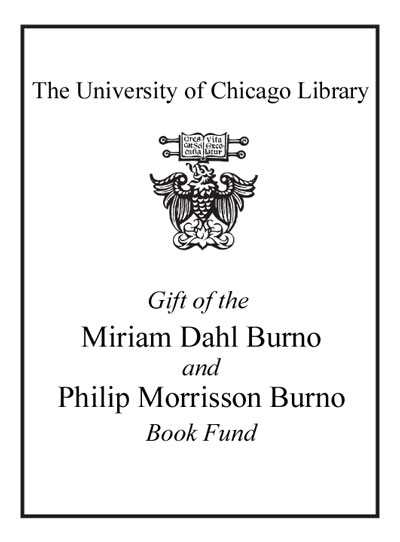Ultrasound guidance in regional anaesthesia : principles and practical implementation /
Saved in:
| Author / Creator: | Marhofer, Peter. |
|---|---|
| Edition: | 2nd ed. |
| Imprint: | Oxford : Oxford University Press, 2010. |
| Description: | xxii, 236 p. : ill. |
| Language: | English |
| Subject: | |
| Format: | Print Book |
| URL for this record: | http://pi.lib.uchicago.edu/1001/cat/bib/8305369 |
Table of Contents:
- Acknowledgements
- Foreword
- Foreword
- Foreword: The surgeon's view
- Contributors
- How to use this book
- Abbreviations
- 1. Basic principles of ultrasonography
- 1.1. Nature of sound waves
- 1.2. Piezoelectric effect
- 1.3. Pulse-echo instrumentation
- 1.4. Resolution and electronic focusing
- 1.5. Time-gain compensation
- 1.6. Measuring velocity with pulsed ultrasound
- 1.7. Ultrasound imaging modes
- 1.8. Common image artefacts
- 1.9. Needle visualization
- 1.10. Equipment needed for ultrasound imaging
- 2. The scientific background of ultrasound guidance in regional anaesthesia
- 3. Initial considerations and potential advantages of regional anaesthesia under ultrasound guidance
- 3.1. History of ultrasound-guided regional anaesthesia
- 3.2. Possible advantages of ultrasound-guided regional anaesthesia
- 4. Technique limitations and suggestions for a training concept
- 4.1. Technical limitations
- 4.2. Non-technical limitations
- 4.3. Suggestions for a training concept in ultrasound-guided regional anaesthesia
- 5. Have we reached the gold standard in regional anaesthesia?
- 6. Technical and organization prerequisites for ultrasonographic-guided blocks
- 6.1. Technical considerations
- 6.2. Organization
- 6.3. Post-operative observation
- 6.4. Other considerations
- 7. Ultrasound-guided regional anaesthetic techniques in children: current developments and particular considerations
- 7.1. Management of minor trauma in children
- 8. Ultrasound appearance of nerves and other anatomical or non-anatomical structures
- 8.1. Appearance of nerves in ultrasonography
- 8.2. Strategies when nerves are not visible
- 8.3. Appearance of neuronal-related structures in ultrasonography
- 8.4. Appearance of other anatomical structures in ultrasound
- 8.5. Appearance of artefacts in ultrasound
- 9. Needle guidance techniques
- 9.1. Out-of-plane (OOP) needle guidance technique
- 9.2. In-plane (IP) needle guidance technique
- 9.3. How to approach a nerve?
- 10. Pearls and pitfalls
- 10.1. Setting and orientation of the probe
- 10.2. Pressure during injection
- 10.3. Jelly pad for extreme superficial structures
- 11. Nerve supply of big joints
- 11.1. Shoulder joint
- 11.2. Elbow joint
- 11.3. Wrist
- 11.4. Hip joint
- 11.5. Knee joint
- 11.6. Ankle
- 12. Neck blocks
- 12.1. General anatomical considerations
- 12.2. Deep cervical plexus blockade
- 12.3. Superficial cervical plexus blockade
- 12.4. Implication of neck blocks in children
- 13. Upper extremity blocks
- 13.1. General anatomical considerations
- 13.2. Interscalene brachial plexus approach
- 13.3. Supraclavicular approach
- 13.4. Infraclavicular approach
- 13.5. Axillary approach
- 13.6. Suprascapular nerve block
- 13.7. Median nerve block
- 13.8. Ulnar nerve block
- 13.9. Radial nerve block
- 13.10. Implications of upper limb blocks in children
- 14. Lower extremity blocks
- 14.1. General anatomical considerations
- 14.2. Psoas compartment block
- 14.3. Femoral nerve block
- 14.4. Saphenous nerve block
- 14.5. Lateral femoral cutaneous nerve block
- 14.6. Obturator nerve block
- 14.7. Sciatic nerve blocks
- 14.8. Ankle blocks
- 14.9. Implications of lower limb blocks in children
- 15. Truncal blocks
- 15.1. General anatomical considerations
- 15.2. Intercostal blocks
- 15.3. Ilioinguinal-iliohypogastric nerve blocks
- 15.4. Rectus sheath block
- 15.5. Transversus abdominis plane (TAP) block
- 15.6. Implications of truncal blocks in children
- 16. Neuraxial block techniques
- 16.1. General considerations
- 16.2. Epidural blocks
- 16.3. Paravertebral blocks
- 16.4. Implications in children
- 17. Peripheral catheter techniques
- 18. Future perspectives
- 18.1. Regional blocks for particular patient populations
- 18.2. Education
- 18.3. Technical developments
- Appendix 1. Zuers Ultrasound Experts regional anaesthesia statement
- Appendix 2. Vienna score
- Appendix 3. Guidelines for the management of severe local anaesthetic toxicity according to the Association of Anaesthetists of Great Britain and Ireland (2007)
- Appendix 4. Definition of specific terms
- Index


